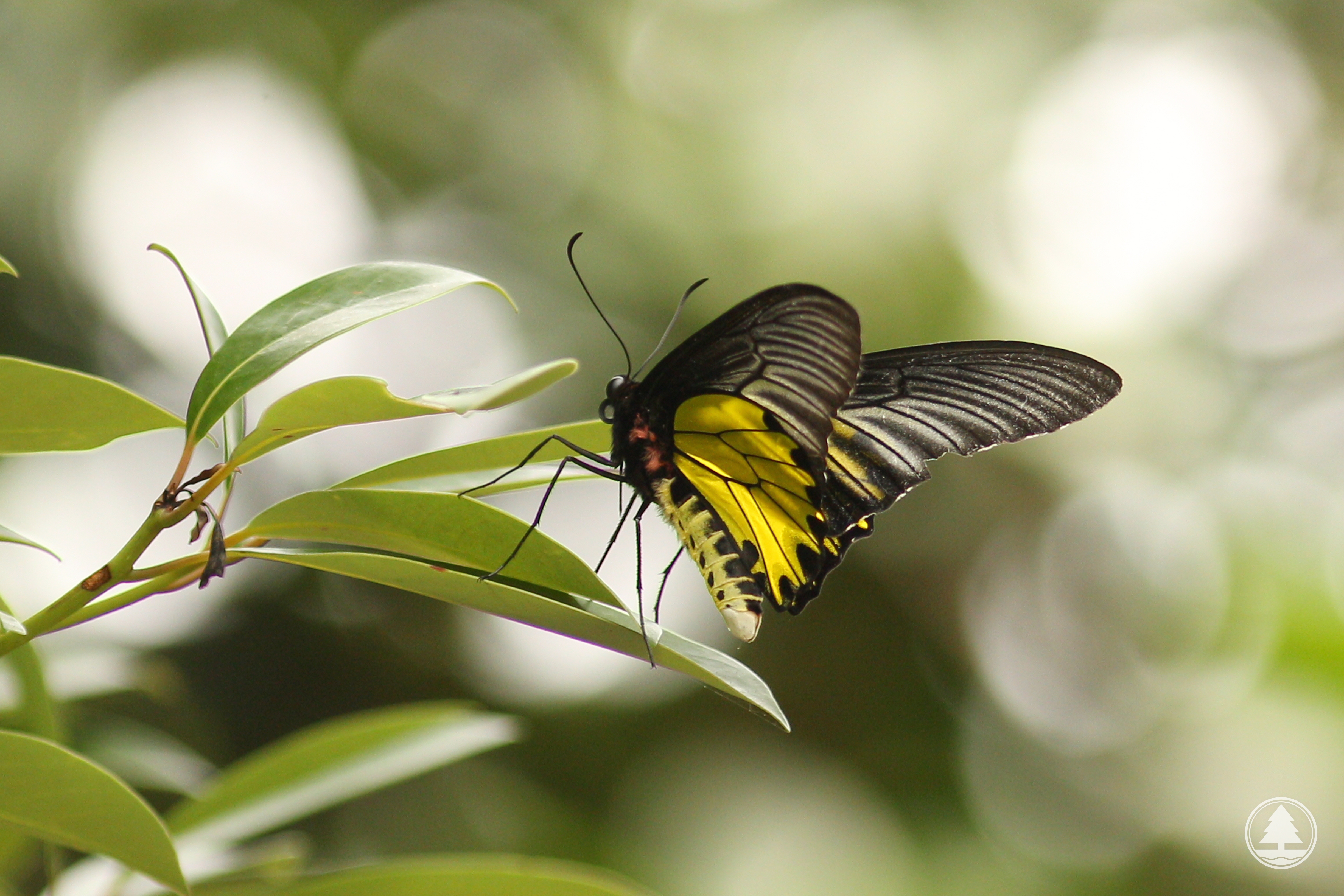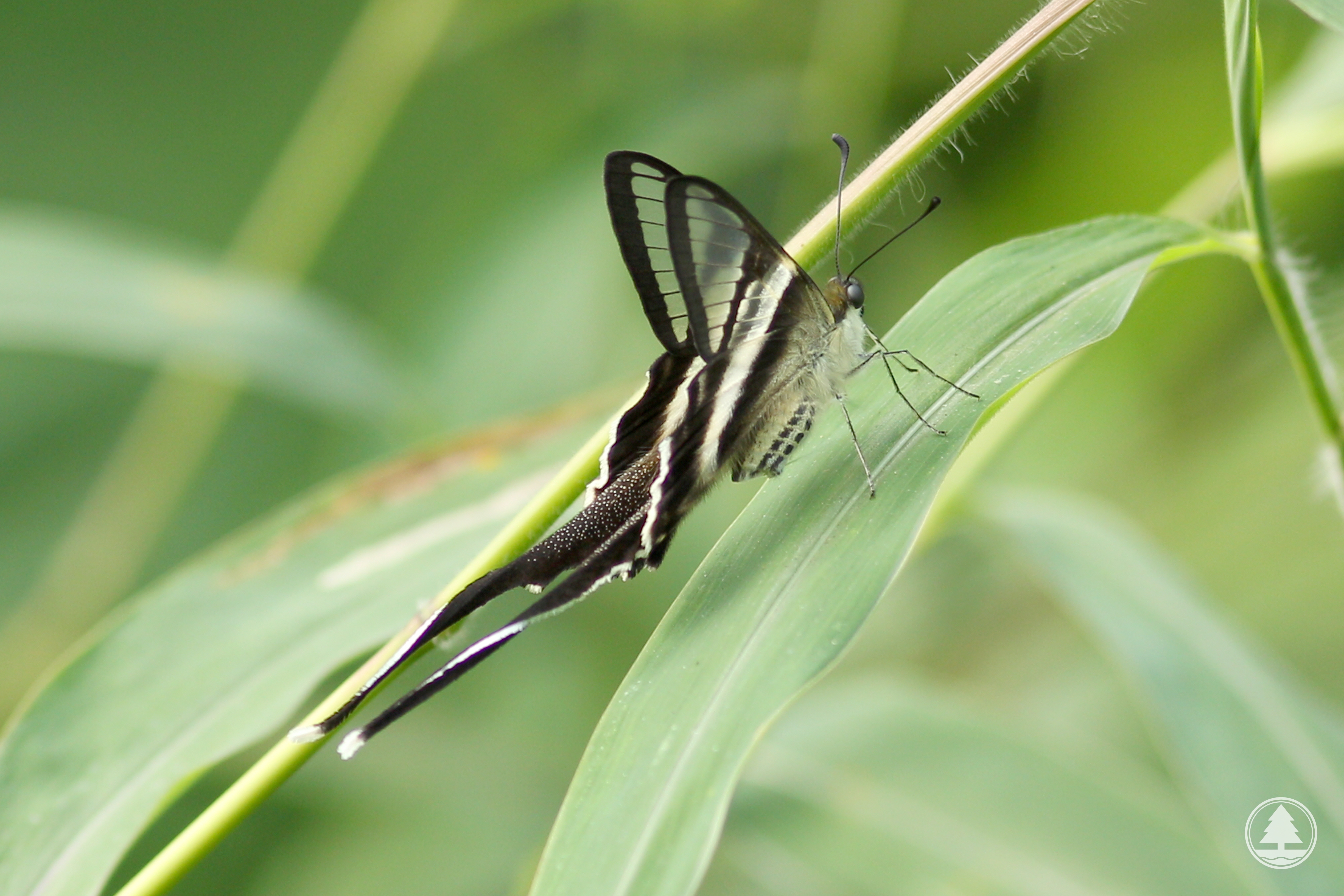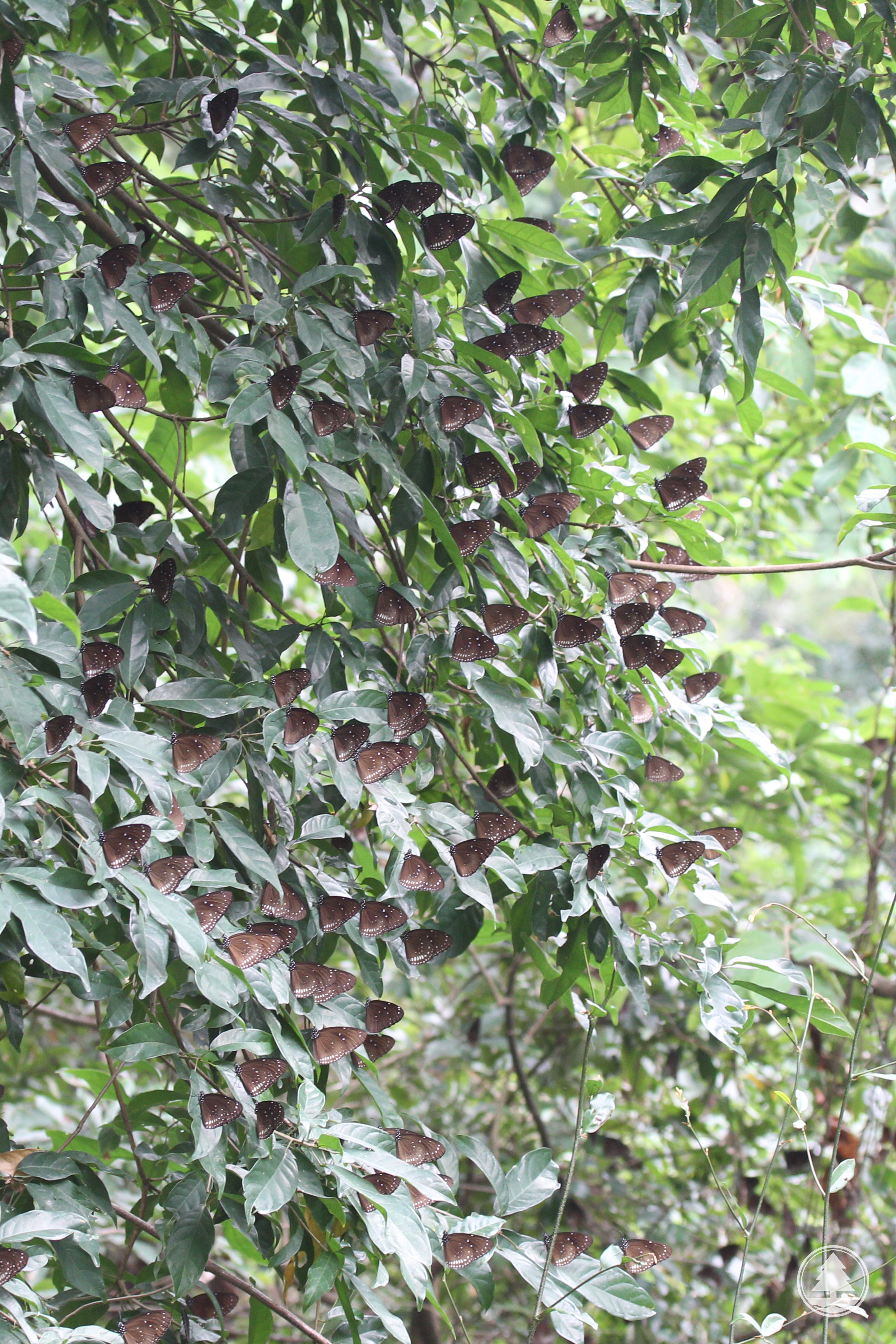|
Butterflies of Hong Kong
Introduction
Composition of Hong Kong Butterflies
Key Species of Conservation Concern
Conservation Measures
Key Sites for Observing Butterflies
Tips for Observing Butterflies
References
Introduction
Lying on the southern coast of Mainland China, Hong Kong is geographically closely linked to Guangdong Province. Blessed with a mild climate and ample rainfall, Hong Kong is rich in flora and fauna. Although some 10,000 times smaller than China, Hong Kong has an impressive butterfly checklist of about 240 species (Lo & Hui 2004), representing about 11% of the 2,153 species recorded throughout China (壽 等 2006).
Historical records show that Hong Kong has an accumulation of around 300 butterfly species. Among them, over 50 species are considered occasional vagrants, doubtful species or having no recent records. After removing these species, the current butterfly checklist in Hong Kong has 245 species, including one endemic subspecies (Halpe paupera walthewi).
Besides having cultural and ornamental value, butterflies also play important and unique roles in ecology, science and the economy. The most widely known is the close correlation between butterflies and plants. At least 6 flora species in Hong Kong depend on butterflies to disperse pollens: Splash-of-white (Mussaenda pubescens), Hong Kong Pavetta (Pavetta hongkongensis), Glabrous Pittosporum (Pittosporum glabratum), Acronychia (Acronychia pedunculata), Long-flowered Ehretia (Ehretia longiflora) and Reevesia (Reevesia thyrsoidea) (Corlett 2001). To scientists, butterflies are great study and research subjects, ones that lead to many other interesting investigations. In China, butterfly caterpillars are used in pharmaceutical applications. The caterpillar of Old World Swallowtail (Papilio machaon) has been used for curing stomach disorder. Indeed, butterflies bring great benefits to both nature and man. They are important insects of significant value.
Composition of Hong Kong Butterflies
Click here to download the Checklist of Butterflies of Hong Kong.
The current butterfly checklist in Hong Kong has 245 species. Hong Kong has five butterfly families (Table 1)
| Table 1: |
Number of species, their preferred habitats and local examples of the five butterfly families in Hong Kong |
| Family |
No. of Species |
Preferred habitat |
Local Example |
| Hesperiidae |
61 |
Grasslands and agricultural fields |
Zizeeria maha
Tagiades litigiosus
|
| Lycaenidae |
57 |
Grasslands and shrublands |
Astictopterus jama
Abisara echerius
|
| Nymphalidae |
84 |
Various habitats |
Neptis hylas
Acraea issoria
Faunis eumeus
Euploea core
Mycalesis mineus
|
| Papilionidae |
22 |
Open woodlands and shrublands |
Papilio paris
Graphium sarpedon
|
| Pieridae |
21 |
Grasslands and agricultural fields |
Delias pasithoe
Pieris canidia
|
| Total |
245 |
|
|
Key Species of Conservation Concern
Before naming a species of conservation concern, one must identify, record and understand accurate information on its life cycle. Some of the rare butterflies feed on certain rare plants and have strikingly coloured patterns, which makes them more vulnerable to illegal collection. These butterflies should be protected. The following are four such species.
Birdwings: Uncommon species Common Birdwing (Troides helena) and rare species Golden Birdwing (T. aeacus) are the largest butterflies in Hong Kong. Their wingspan can be as wide as 16 cm, and Common Birdwing (T. helena) is usually larger than Golden Birdwing (T. aeacus). Both species are listed as butterflies of local conservation concern by Fellowes et al (2002). They share similar habits and occur in areas where India Birthwort (Aristolochia tagala) grows. Adults often sip nectar from the flowers, and males display significant territorial behaviour. The Indian Birthwort is a climbing vine found in shrublands. It is the food plant of Birdwing larvae. Attracted by its special scent, female Birdwings lay eggs on its stems and leaves. When hatched, the caterpillars feed on new shoots, buds and leaves. After maturing, caterpillars usually pupate and hang their chrysalises on the stem of Indian Birthwort. In fact, Birdwings spend a good part of their life on Indian Birthwort.
Both species have been recorded in Po Lo Che, Fung Yuen Valley, Tai Po Kau, Ngong Ping, Tai Lam Wu, Tai Tam Country Park and Shing Mun Country Park. Records show that Common Birdwings are more widely distributed than Golden Birdwings. The former can also be found in Shan Liu, Ho Chung and Wong Lung Hang.
 |
| Common Birdwing, Troides helena |
 |
| Golden Birdwing, Troides aeacus |
White Dragontail: Lamproptera curius is the smallest Swallowtail in Hong Kong. It is considered rare in Hong Kong. Its characteristic dragonfly-like flying pattern, transparent wing parts and tailed hind wings distinguish it from other butterflies. Its larval food plant Illigera (Illigera celebica) is protected under the Forestry Regulations of the Forests and Countryside Ordinance (Cap. 96). White Dragontail has been recorded in Po Lo Che, Fung Yuen Valley, Tai Po Kau, Shing Mun Country Park, Yung Shue O, Kak Hang Tun and Kap Lung.
 |
| White Dragontail, Lamproptera curius |
Red Lacewing: Cethosia biblis is a locally uncommon species whose larvae feed on Passiflora moluccana, a vine of restricted distribution. This species used to have a wider distribution. During the 1960-70's, it was widely present in the New Territories and was recorded in Stanley on Hong Kong Island (Marsh 1960). Recent records were made in Lung Kwu Tan, Lung Kwu Chau, Pui O and Shing Mun Country Park.
 |
| Red Lacewing, Cethosia biblis |
Conservation Measures
Successful conservation begins with educating our younger generation. Only by communicating knowledge and appreciation of butterflies can we succeed with a long-term conservation programme. While actively promoting nature education, the Agriculture, Fisheries and Conservation Department (AFCD) has established a complete, systematic butterfly database from our baseline surveys. This data makes an important base for future monitoring and conservation programmes.
Individual Species Conservation and Legislative Protection
Common Birdwing is protected under the Wild Animals Protection Ordinance (Cap. 170) and all Birdwings (Troides spp.) are listed under Schedule 1 of the Protection of Endangered Species of Animals and Plants Ordinance (Cap. 586) that regulates the trade and possession of these butterflies. In addition, Indian Birthwort and Illigera are protected under the Forestry Regulations of the Forests and Countryside Ordinance (Cap. 96). No person shall, without lawful excuse, sell or have in his possession of these plants.
Preserving Habitats for In-situ Conservation
About 80% of Hong Kong's territory is natural, or semi-natural. Nearly half of this, 40% is designated as Country Parks and Special Areas, where plants and animals within are protected by law and managed by AFCD. Butterfly Working Group (2011) identified 51 butterfly species of conservation concern. We assessed the effectiveness of Hong Kong 's protected area system in protecting these 51 species based on the existing butterfly distribution information. It was found that 49 of the 51 species have at least one locality inside the Hong Kong protected area system.
Only two species, Silver Forget-me-not (Catochrysops panormus) and Double-branded Black Crow (Euploea sylvester), which account for less than one percent of the total of butterfly species recorded in Hong Kong, are not represented in our protected areas. In late 2004, in collaboration with conservation organizations such as Hong Kong Lepidopterists' Society, WWF HK, Kadoorie Farm & Botanic Garden and Green Power, AFCD selected various sites in Hong Kong as key conservation sites for butterflies, and thus assisted in mapping out our future butterfly conservation work.
Key Sites for Observing Butterflies
Wu Kau Tang and Lai Chi Wo: Partly within the Plover Cove Country Park, these two sites and the areas between them cover a variety of different habitats including woodlands, scrublands, abandoned agricultural fields and coastal areas. Some uncommon Lycaenidae and rare Hesperiidae, such as Narrow Spark (Sinthusa nasaka) and Shiny-Spotted Bob (Isoteinon lamprospilus), can often be seen. In addition, Yellow Coster (Acraea issoria) was first recorded in an abandoned agricultural field here in 2002.
Tai Po Kau Nature Reserve: Some uncommon and very rare butterflies, like Constable (Dichorragia nesimachus), Red-breast Jezebel (Delias acalis) and Green Skirt Baron (Cynitia whiteheadi) can be found here. Tawny Mime (Papilio agestor), another species recorded in Hong Kong in 2002, was discovered at this site. In Butterflies of Tai Po Kau Nature Reserve, Young and Lee (2001) listed more than half of the butterfly species occurring in Hong Kong.
Pak Tam Chung: Within the Sai Kung East Country Park, Pak Tam Chung is a well-vegetated area with high butterfly diversity. These included White-banded Flat (Gerosis phisara), Tailed Sulphur (Dercas verhuelli), Gaudy Baron (Euthalia lubentina) and Muirhead's Labyrinth (Neope muirheadii).
Fung Yuen Valley: Designated as a Site of Special Scientific Interest (SSSI) in 1980, Fung Yuen Valley is a forested ravine behind the village of Fung Yuen. This SSSI is recognized as an important breeding site for some butterflies of conservation concern, such as Common Birdwing (Troides helena) and White Dragontail (Lamproptera curius). Despite being located at the urban fringe, remarkably more than half of all local butterfly species have been recorded here (Young & Yiu 2002).
Lung Kwu Tan: The fung shui wood and adjoining scrubland on the hillside in the vicinity of the Lung Kwu Tan Village are renowned for its diverse butterfly assemblages. The site is also recognised as an important breeding site of the locally uncommon Red Lacewing (Cethosia biblis). Other uncommon butterflies found here include Falcate Oak Blue (Mahathala ameria) and Danaid Eggfly (Hypolimnas misippus).
The Peak: The Peak is one of the last green havens on the heavily built-up Hong Kong Island, with relatively well preserved vegetation. In the area between Lugard Road and Harlech Road, butterflies are common. The butterfly species recorded in the Peak area included the uncommon Red Lacewing (Cethosia biblis), Dark Edged Snow Flat (Tagiades menaka) and very rare Chinese Windmill (Byasa confusus).
Siu Lang Shui: Siu Lang Shui is a closed landfill where public access is restricted. Although the site has been planted almost entirely with exotic trees species, such as Eucalyptus spp. and Acacia confusa, it is an important overwintering site for Crows and Tigers (sub-family Danainae), mainly Common Indian Crow (Euploea core) and Blue-spotted Crow (E. midamus), and a small number of the uncommon Striped Blue Crow (E. mulciber) and Dark Blue Tiger (Tirumala septentrionis). Scientific research carried out by AFCD indicates approximately 32,000 - 45,000 individuals spent the 2002 - 2003 winter in Siu Lang Shui.
 |
| Crows aggregating at Siu Lang Shui |
Tips for Observing Butterflies
There are 5 families of butterflies in Hong Kong, each different in shape, colour, flight pattern and other characteristics. Beginners can identify individual species by noting these features. Illustrated butterfly guides and reference information are helpful tools for learning special features and ecological characteristics. To accurately identify smaller species, such as Hesperiidae and Lycaenidae, or to distinguish similar species, you need field observation experience. The more you watch butterflies in the wild, the better you will get.
Season
Butterflies become inactive when the temperature drops below 22°C. With an average temperature of 22.8°C, Hong Kong has butterflies occurring all year round. Abundance and diversity are most marked in spring and summer between April and June, and in autumn between October and November. On particularly cold or hot days, butterfly numbers decrease drastically. Species that go through one generation of life cycle a year occur only in certain months. If you miss them, you would have to wait till next year.
Weather
Butterflies are poikilotherm (animals whose body temperature adjusts depending on the environment). You often see them sunbathing themselves where there is ample sunlight. This is a good time to observe them closely, as they remain relatively still. On cloudy days their numbers drop and on days of heavy rain you would not find any butterflies at all. When the sun comes out after rain, it is one of the best times to watch them in motion.
Time
On warm days in spring and summer, the best hours to watch butterflies are 9:00-11:00 am and 2:00-4:00 pm. In autumn and winter, the best hours are 10:00-11:00 am and 2:00-3:00 pm. Although most butterflies are active during the day, some Hesperiidae and Satyridae are most active at dusk.
Place
Diverse habitats and flora provide butterflies with diverse roosting, feeding and mating environments. Common species like to visit flowering plants in the open countryside. Abandoned agricultural fields, fruit orchards, fung shui woods and most Country Parks are all ideal butterfly watching spots. In the uplands, you can find uncommon and rare species congregating at summits where they mate. Remote islands are also good places to watch rare butterflies. Butterflies generally avoid windy and permanently shaded areas.
Things you need
Illustrated butterfly guide, notebook, pen, camera and binoculars.
Respect life. Do not capture any butterflies in the wild.
References
Bascombe, M.J., Johnston, G., and Bascombe, F.S. (1999). The Butterflies of Hong Kong. London: Academic Press.
Butterfly Working Group (2003). Migration and overwintering aggregation of Danaid butterflies in Hong Kong. Hong Kong Biodiversity 6: 1-7.
Butterfly Working Group (2011). A review on the local restrictedness of Hong Kong Butterflies. Hong Kong Biodiversity 21: 1-6.
Butterfly Working Group (2018). Note on the current status of Euthalia niepelti, Lethe chandica and Notocrypta paralysos. Hong Kong Biodiversity 25: 17:18.
Chou, I. (1994). Monographia Rhopalocerorum Sinensium. Henan: Henan Science and Technology Press. (Chinese reference)
Corlette, R.T. (2001). Pollination in a degraded tropical landscape: a Hong Kong case study. Journal of Tropical Ecology 17: 155-161.
Fellows, J.R., Lau, M.W.N., Dudgeon, D., Reels, G. T., Ades, G.W.J., Carey, G.J., Chan, B.P.L., Kendrick, R.C., Lee, K.S., Leven, N.R., Wilson, K. D. P. and Yu, Y. T. (2002). Wild Animals to Watch : Terrestrial and Freshwater Fauna of Conservation Concern in Hong Kong. In Hodgkiss, I.J. (ed.). Memoirs of the Hong Kong Natural History Society. Hong Kong: The Hong Kong Natural History Society. No. 25. . pp. 123-159.
Lo, Y.F. and Hui, W.L. (2004). Hong Kong Butterflies. Hong Kong: Agriculture, Fisheries and Conservation Department.
Marsh, J.C.S. (1960). Hong Kong Butterflies. Hong Kong: The Shell Company of Hong Kong Ltd.
Young, Y.S. and Li, P.C. (2001). Butterflies of Tai Po Kau Nature Reserve. Hong Kong: Agriculture, Fisheries and Conservation Department.
Young, J.J. and Yiu, Y. (2002). Butterflies Watching in Hong Kong. Hong Kong: Wan Li Book Co. Ltd.
壽 建 新 、 周 堯 、 李 宇 飛 (2006) 。 《 世 界 蝴 蝶 分 類 名 錄 》 。 陝 西 : 陝 西 科 學 技 術 出 版 社 出 版。
|